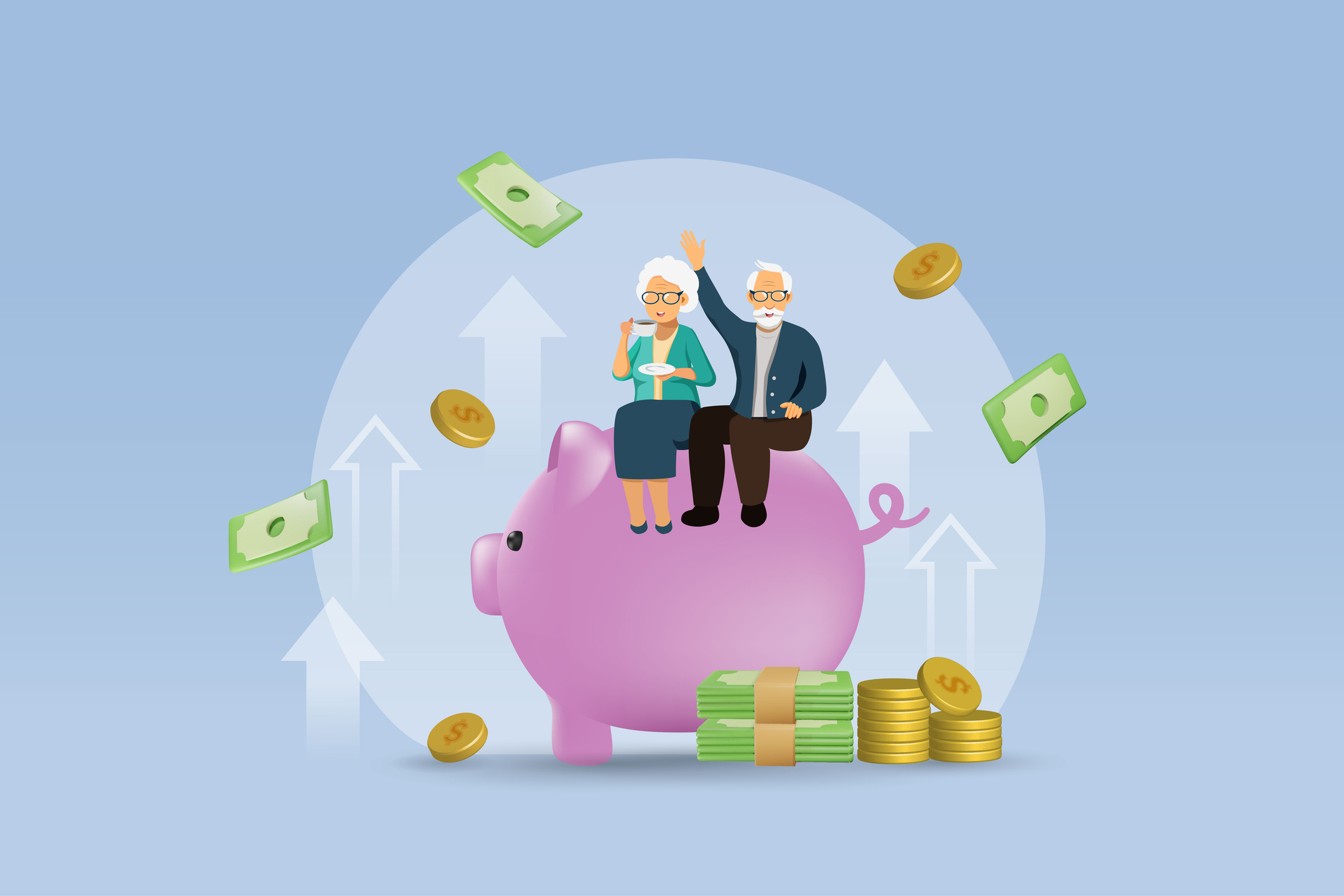Why the Bull Market Will Keep Going
Though risks are high, expect modest gains for the remainder of the year.
So much for a summer swoon. Since tumbling by 5.3% in the two trading sessions following Britain’s decision to exit the European Union, the U.S. stock market has more than recovered those losses. From its closing low of 2,001 on June 27 through its July 12 close of 2,152, Standard & Poor’s 500-stock index climbed 7.7%. Year to date, the index has produced a total return of 6.6%. A record closing high, reached on July 11 after more than 14 months of ups and downs, confirmed that the bull market that began in March 2009 remains intact.
Few strategists predicted such a comeback, which caught us by surprise, too. In our midyear outlook, we wrote that we expected the S&P 500 to end 2016 at 2,150, producing a total return, including dividends, for all of 2016 of about 7%. When we wrote that forecast last May, the bull market seemed to be fraying, with corporate profit growth waning and the economy limping along. Throw in tepid foreign markets and a strong dollar—which causes sales and profits of U.S. companies made overseas to translate back into fewer greenbacks—and it looked like stocks would have trouble breaking even for the year.
Yet as veteran strategist Ed Yardeni points out, this bull market refuses to give up. Granted, stocks have come a long way since March 2009, returning 272% (19.6% annualized), including dividends. “Like Rocky, the current bull market is aging,” Yardeni says, “but it is still putting up a great fight.” He says the market’s sell-off after the Brexit vote was just a panic attack.
From just $107.88 $24.99 for Kiplinger Personal Finance
Become a smarter, better informed investor. Subscribe from just $107.88 $24.99, plus get up to 4 Special Issues

Sign up for Kiplinger’s Free Newsletters
Profit and prosper with the best of expert advice on investing, taxes, retirement, personal finance and more - straight to your e-mail.
Profit and prosper with the best of expert advice - straight to your e-mail.
We also think the market is showing some surprising resilience and is likely to produce better results for the year than we originally anticipated. Figure on the S&P 500 approaching 2,200 by the end of 2016 and returning close to 10% for the year. That said, it won’t take much to knock stocks off course, such as a political crisis or surprise decision by the Federal Reserve to keep raising U.S. interest rates. Stocks aren’t particularly cheap either, making this a less-than-ideal buying opportunity, though we do still like certain sectors and individual companies.
So what has lifted investors’ spirits? For starters, the prevailing view now is that central banks are so worried about slowing economies that they are unlikely to raise rates or engage in other forms of monetary belt-tightening. The United Kingdom may tip into a recession, dragging down the rest of Europe. But that prospect would trigger cuts in short-term rates or more bond buying by the European Central Bank and the Bank of England, pushing bond yields ever lower.
The potential for lower rates and a possible recession in Europe is also likely to keep the Fed’s plans to hike U.S. interest rates on hold. Indeed, the likelihood of another rate hike over the next 12 months has dropped to zero, according to futures contracts for the benchmark federal funds rate that track investor expectations of where the rate will be in a year.
For stock investors, these are all bullish signals. “The market always takes a strong cue from the Fed,” says Jim Stack, editor and publisher of the InvesTech Research newsletter and president of Stack Financial Management, in Whitefish, Mont.
Indeed, the Fed may now be on hold at a time when the economy is showing strength—typically a bullish environment for stocks. The latest employment report, showing gains of 287,000 new non-farm jobs in June, eased fears of an economic slowdown. Measures of consumer confidence aren’t signaling an imminent slowdown either, says Stack. And leading economic indicators—which signal the direction of economic growth—continue to hit new highs.
From a technical perspective, the market also looks healthy. One bullish signal, for example, is the breadth of the rally, with many more stocks hitting new highs than new lows. “You can’t be in a bear market with participation that strong,” says Stack.
[page break]
Historically, when the S&P 500 has reached a new high after a long pause, it has usually been a great buying opportunity, says Bank of America Merrill Lynch. Although it took more than 14 months for the S&P 500 to reach a new 52-week high without falling into a bear market, the fact that it finally made it signals that stocks should keep climbing. Merrill says that historically stocks have climbed 91% of the time in the 250 trading days after this type of signal, posting an average return of 15% in that span. That would put the S&P 500 at about 2,400 by this time next year, an increase of 11.5% from the July 12 close. “Investors hate to chase a rally,” Merrill says, but “new highs should not feared.”
Unfortunately, things don’t look so rosy through a “fundamental” lens of stock valuations and corporate profits. The market’s price-earnings ratio has climbed to 16.6 times estimated earnings for the next 12 months, according to research firm Factset. By some measures, that puts stocks in pricey territory—well above the average P/E of 14.3 over the past 10 years, says Factset. “We have not resolved high valuations,” says Stack. “It’s hard to argue that this is a great profit opportunity,” he says.
Also worrisome is corporate profit growth, or lack thereof. Analysts estimate that S&P 500 earnings fell 5.6% in the second quarter from the same period in 2015, according to Factset. That would mark the fifth consecutive quarter of year-over-year earnings declines.
Some strategists see profits continuing to edge down. Jason Trennert, head of investment research firm Strategas Research Partners, forecasts earnings of $115.50 for the S&P 500 this year and $111.75 in 2017. The “central tendency in corporate profits is lower,” he says.
But slowing corporate profits doesn’t necessarily mean stocks are due to fall. If earnings are near a bottom, markets will start to rise on anticipation that things will improve from here. Scott Wren, senior global strategist for Wells Fargo Investment Institute, sees the S&P 500 continuing to rally, ending the year between 2,190 and 2,290. Although the market’s P/E looks elevated, stocks don’t appear pricey in such a climate of low-inflation and low interest-rates, especially with the economy moving in the right direction.
“The bulk of the gains in this bull market are probably over,” Wren says, “but we’re in the 7th inning with one out. There’s a lot of baseball to be played over the next two to three years.”What should investors do now? The best course may simply be the boring one: stick with quality companies that offer earnings and dividend growth, and don’t stretch too far for yield. Stocks we highlighted in our mid-year outlook, such as Amgen (symbol AMGN, $161.96), Cisco Systems (CSCO, $29.61) and Microsoft (MSFT, $53.21) still look compelling, in our view. We also like value stocks such as MetLife (MET, $40.76) and Royal Dutch Shell (RDS-B, $57.40), along with exchange-traded funds such as Powershares Dynamic Large Cap Value ETF (PWV, $31.49), which we recently added to the Kiplinger ETF 20. (Share prices are as of the July TK close.)
Less attractive are telecom, consumer staples and utility stocks. These sectors have run up sharply as investor have flocked in for their above-average yields and perceived safety. But prices now make them less likely to outperform the broader market, says Wren. More compelling, in his view, are sectors such as health care, industrials and technology.
Bob Doll, chief equity strategist at Nuveen Asset Management, likes stocks that should fare will in an improving economic climate. Airlines, for example, would be one beneficiary, as would tech-hardware makers. Banks could also get a lift if interest rates start edging up, which Doll expects to happen. In two trading sessions covering July 11 and July 12, the yield on the benchmark 10-year Treasury bond climbed from 1.37% to 1.51%—a huge move by the standards of the normally sedate bond market. “Inflation is moving up,” says Doll, and that will cause rates to “drift higher.”
Overall, Doll figures that the bull market still has some spunk left. The initial comeback after the Brexit vote was a reversal of an “Armageddon-like” spasm of fear, he says. But the market is now digesting the prospect of a longer period of low rates, which should spur economic growth and make stocks look more compelling than bonds. Stronger economic growth could also improve corporate profits, lifting them out of the current earnings slump sooner than expected. “I think the market will go higher,” he says. “I wouldn’t pound the table for stocks, but breakouts to new highs are generally followed by higher highs. So we have a way to go.”
Profit and prosper with the best of Kiplinger's advice on investing, taxes, retirement, personal finance and much more. Delivered daily. Enter your email in the box and click Sign Me Up.

-
 It's Beginning to Look a Lot Like a Santa Rally: Stock Market Today
It's Beginning to Look a Lot Like a Santa Rally: Stock Market TodayInvestors, traders and speculators are beginning to like the looks of a potential year-end rally.
-
 The 2026 Retirement Catch-Up Curveball: What High Earners Over 50 Need to Know Now
The 2026 Retirement Catch-Up Curveball: What High Earners Over 50 Need to Know NowUnlock the secrets of the 2026 retirement catch-up provisions: A must-read for high earners aged 50 and above.
-
 How Much a $100K Jumbo CD Earns You
How Much a $100K Jumbo CD Earns YouYou might be surprised at how fast a jumbo CD helps you reach your goals.
-
 If You'd Put $1,000 Into Coca-Cola Stock 20 Years Ago, Here's What You'd Have Today
If You'd Put $1,000 Into Coca-Cola Stock 20 Years Ago, Here's What You'd Have TodayEven with its reliable dividend growth and generous stock buybacks, Coca-Cola has underperformed the broad market in the long term.
-
 If You Put $1,000 into Qualcomm Stock 20 Years Ago, Here's What You Would Have Today
If You Put $1,000 into Qualcomm Stock 20 Years Ago, Here's What You Would Have TodayQualcomm stock has been a big disappointment for truly long-term investors.
-
 If You'd Put $1,000 Into Home Depot Stock 20 Years Ago, Here's What You'd Have Today
If You'd Put $1,000 Into Home Depot Stock 20 Years Ago, Here's What You'd Have TodayHome Depot stock has been a buy-and-hold banger for truly long-term investors.
-
 What the Rich Know About Investing That You Don't
What the Rich Know About Investing That You Don'tPeople like Warren Buffett become people like Warren Buffett by following basic rules and being disciplined. Here's how to accumulate real wealth.
-
 If You'd Put $1,000 Into Bank of America Stock 20 Years Ago, Here's What You'd Have Today
If You'd Put $1,000 Into Bank of America Stock 20 Years Ago, Here's What You'd Have TodayBank of America stock has been a massive buy-and-hold bust.
-

 If You'd Put $1,000 Into Oracle Stock 20 Years Ago, Here's What You'd Have Today
If You'd Put $1,000 Into Oracle Stock 20 Years Ago, Here's What You'd Have TodayORCL Oracle stock has been an outstanding buy-and-hold bet for decades.
-
 How to Invest for Rising Data Integrity Risk
How to Invest for Rising Data Integrity RiskAmid a broad assault on venerable institutions, President Trump has targeted agencies responsible for data critical to markets. How should investors respond?
-
 If You'd Put $1,000 Into Sherwin-Williams Stock 20 Years Ago, Here's What You'd Have Today
If You'd Put $1,000 Into Sherwin-Williams Stock 20 Years Ago, Here's What You'd Have TodaySherwin-Williams stock has clobbered the broader market by a wide margin for a long time.

